|
When it seems like your training isn’t working, your dog isn’t getting the concepts and/or training is frustrating instead of fun, check out the troubleshooting items below:
Don't forget to reference the Human Hierarchy for help with which tools to use and when! If you need help or have questions, please contact us. We're more than happy to help and we offer online lessons as well!
0 Comments
Let's continue what to look for when finding an ethical, skilled dog trainer with an up-to-date tool kit. In part 2 we'll discuss the red flags (bad), the green flags (good) and other considerations to think about. Quick Test There are competent and knowledgeable trainers across different disciplines of training just as there are incompetent and uneducated trainers across different disciplines. If you want to quickly figure out if the trainer you're talking to knows their basics, ask them to explain the difference between positive reinforcement, positive punishment, negative reinforcement and negative punishment. These are the 4 quadrants of behavior and every trainer should know what they are, an example of each and when it's important to purposely utilize which quadrants. Ready for your cheat sheet? It's super easy. Positive means you add something. Negative means you take something away. Reinforcement means you increase a behavior. Punishment means you decrease a behavior. That's it. Examples: Positive Reinforcement - you give your dog a treat for sitting, which causes them to sit more often because something good happened when they sat. Negative Reinforcement - removing a stimulus your dog doesn't like from their environment (like a vacuum cleaner or a dog across the street) when your dog turns their attention to you. Positive Punishment - you say "ah ah!" when your dog (who has a good history of leaving food alone and is sensitive to verbal corrections) tries to take food from a table. Negative Punishment - you leave the room when your dog jumps on you. Red Flags
- When they use the same tools and exercises for every dog they work with. This doesn’t include safety gear like your basic leash and collar or food rewards. But if they put every dog into a board and train regardless of personality or background, they use an e-collar for every dog they work with, they use a clicker for every dog they work with, etc. They should consult with you about your dog’s history, your preferences, then make a personalized plan. - If they use tools that have a high likelihood of being aversive, causing a stress response and creating additional physical/emotional damage to dogs, they better have a dang good reason. These tools include physical corrections, e-collars, choke collars and prong collars, but this can include anything that your dog finds aversive. Even food rewards can be used in an abusive manner. For the record, the majority of trainers who use these tools because they genuinely want to help and create positive outcomes. They just might not have as big a toolbox as other trainers who dedicate more time and effort to productively honing their craft with updated methods and techniques. They’re doing the best they can with the information they have.
- Similarly, trainers who seem to offer every service. Ever heard the phrase “Jack of all trades – Master of none.”? If they focus on too many things (basic obedience, reactivity, agility, bitework/protection, trick training, search and rescue, service dogs, etc.), they aren’t going to get really good at any of those. Unless it’s a really large training company with a lot of different trainers who each focus on a few areas, you’re not going to get the most knowledgeable service. I personally know trainers who'll often only spend a few days/weeks learning a new skill before offering those to the public. In some cases, like a technique for loose leash walking, to get better attention or a training game, that's fine. But for an entire branch of training, like any dog sports, service dog work, competition scent-work, etc, these skills take much longer to learn and years to master. - If they don’t have a contract and don’t take any form of client history about your dog. It’s a sign that they aren’t legally organized, which means less protection for you. They may not have insurance or have their business license. If they aren’t taking client history, they don’t have the information needed to better build a custom training plan (for private lessons). - Really low pricing. Unless they’re running a massive promo and/or they’re getting some other value from you, if they’re charging less than $70 a session, there’s a reason. It’s probably because they’re a hobby trainer who has minimal experience and education, probably no license, probably no liability/business insurance, might not have a business set up or registered, and might make all of your problems worse. You get what you pay for. Green Flags - They use terms like positive reinforcement, science-based, fear-free, and LIMA (least intrusive, minimally aversive). Although you do still need to be careful, because again, these are marketing terms and aren’t regulated. Anyone can use them and not actually use those methods. I know trainers who claim to use LIMA methods who actually use pretty outdated and stressful methods. Positive reinforcement in particular is a huge marketing buzzword right now and a lot of trainers will use positive reinforce one second, then use a harsh correction the next second. This is extremely confusing and stressful for your dog.
- They ask you lots of questions and ask you to participate in the training process as much as possible. They also ask for your consent and read your dogs’ body language to make sure they’re comfortable. They stop if your dog shows signs of stress or anxiety. They listen to your concerns and modify the training plan to meet your needs. - They don’t typically badmouth other trainers and they don’t often have videos of dogs who are stressed, reactive, showing signs of fear, aggression, etc. Their goal is to never get the dog in those states of mind and to keep the dog as happy and stress-free as possible. Real, ethical dog training is fairly boring to watch. It doesn’t make for good TV (which is why you don’t see science-based trainers with TV shows).
- They don’t make time-based or behavior-based guarantees. The reason for this is each dog is an individual and will behave differently and take different amounts of time than another individual to get from point A to point B. Putting a time limit on behavior puts a lot of pressure on the trainer and the dog and turns the process into an aversive experience for everyone involved. It’s setting everyone up for failure. Guaranteeing behaviors of a living animal is risky at best. Guaranteeing the behavior of a live animal that doesn’t live with you where you can manage their enrichment, day-to-day training and interactions with other people and animals is impossible. There are far too many variables. We cannot and would not control the behavior of others just to make a silly marketing guarantee. Other Considerations - Reviews don’t mean what you think they mean. I mean this with all the love in the world for dog owners – many dog owners haven’t learned to read their own dogs’ body language or interpret what their dog is trying to tell them. Many dog owners seem to think the easiest solution is the best solution. Many dog owners also just buy into whatever any dog trainer tells them, without looking at the whole picture. And a whole ton more dog owners don’t feel comfortable for various reasons leaving honest reviews of bad experiences. There are also a number of ways to collect lots of non-authentic 5-star ratings. All of this adds up to a decent number of companies that have just the worst training methods, ethics, customer service, etc (I mean, I can tell you some stories, and not just about dog training companies) that have dozens to hundreds of 5 star reviews. The best thing to do with reviews is to look at the owner responses to the negative reviews. That will tell you a lot more about the business than the reviews will. You can also ask trusted friends and family members about their experiences.
- Similar to reviews, just because a trainer has a large following, travels to lecture, gives lots of workshops or charges sky-high pricing, does NOT necessarily mean they’re a skilled trainer. They may just have good people skills. There are also some amazing dog trainers who can train circles around a lot of the more popular trainers who don’t have any following yet because they don’t know how to market themselves.
The dog training industry in the US isn’t regulated. It’s regulated very few places in the world actually.
As always, there are exceptions to every rule, so the number one thing to keep in mind is how you and your dog feel about the experience you have. Ask yourself these questions when working with a dog trainer: 1. Do I feel comfortable with this person? 2. Do they listen to me and my concerns? 3. Does my dog look happy during training? 4. Does my dog appear to be excited/happy when they see the trainer? (Obviously this doesn’t apply if your dog has a history of reactivity, fear of strangers, or they don’t seem to care for anyone outside the family already) 5. Does your dog get to make choices during the training process and choose to be involved in the training process? 6. Does the trainer force your dog to do things they don’t like? 7. Does the trainer customize the training plan for your individual dog (for private lessons) or do they use the same tools/exercises for every dog they work with? 8. How does the trainer respond to negative reviews? If something happens, do you feel comfortable with them responding the same way to you? 9. Is the training plan effective? Changing behavior can take time. Some behaviors take more time than others, but if you’ve been training for weeks or months with no change at all, that’s a red flag. 10. Is the trainer willing to refer you to someone better qualified if needed? Are they willing to place your dogs’ best interests over their paycheck? These include: Dog Psychologist, Master Trainer, Expert in Dog Psychology, Dog Behavior Specialist, Expert Consultant in Dog Psychology, or any similar variations. People make up some weird stuff. Additional terms like Balanced, LIMA, Science-based, Positive Reinforcement, Force Free, Fear Free, etc, usually give you more information as to the trainer's methods and tools. However, you still need to carefully vet the trainer to ensure they actually use and understand the methods instead of simply using marketing buzzwords.
Behavior Consultant – this is a dog trainer who has earned this title through a butt-ton of experience and through passing a knowledge (and sometimes skills-based) certification exam. They have to agree to a code of conduct and ethics and must upkeep their certification with continuing education units. Those who fail to do so will lose their behavior consultancy status. Example: Allie and Emily with Pet Harmony Behaviorist/Behaviourist – This is a professional who has a master’s degree or higher in one of the behavioral sciences and has passed their certification test. They are usually affiliated with a veterinarian organization. They are able to diagnose and prescribe. (Note that true Behaviorists aren’t common and this is a regulated field. There are trainers who claim to be behaviorists, who don’t even know what a real Behaviorist is. Check their credentials!) Example: Lynne with Pets Decoded Veterinarian Behaviorist – This is what it sounds like – a veterinarian who also has their Behaviorist certification. These pros are the top of the behavior food chain and take the most extreme cases. They often use a combination of behavior modification, management and medication.
1. Builds better relationships - when you spend time with your pet engaging in activities you both enjoy, where you have to work together as a team, that's a HUGE boost to your relationship bank account.
5. Pets learn how to learn and you learn how your pet learns - especially as you learn more intricate and complex behaviors, you'll become a master of understanding how to teach your pet based on their own learning style and they'll become better and better at trying new and more complex behaviors.
7. Great mental exercise - just like us, mental exercise is important for pets too! Did you know that a study done recently in dogs suggests that mental exercise tires them out 4x faster than physical exercise? Trick-training is a fantastic mental work-out and a 5-10 minute session teaching them a new trick will often wear them out faster than taking them on a 30 minute run!
9. Teaches obedience behaviors - There are many tricks that can be used to teach traditional "obedience" behaviors. I have some favorites I like to use for recall and loose leash/heel in particular. People tend to treat trick training like a game and obedience like a chore, so guess which behaviors the pets prefer? Trick training of course? So I use as many tricks and games in training as I possibly can. :)
11. Makes your pet more approachable - obviously this is a personal preference and some people like their pet to appear more intimidating in certain contexts (and that's totally fine!). But maybe when your 5-year niece or your grandmother comes over and sees your large black and tan dog, your black cat or the beak on your cockatoo and looks frightened (if they shouldn't be), having your pet do some silly tricks often changes people's attitudes. It's a lot harder to be scared of a dog who flops over on it's back and wriggles around when you tell them to play dead. 12. Trick Training is kid-friendly - kids often love pets, but sometimes the feelings aren't mutual because pets feel overwhelmed by the sudden movements, noises and physical interactions of children. If you teach children how to engage with pets using tricks the pet knows and loves, the children are entertained by the silly antics of the pet (and they never have to touch the pet and overwhelm them during this time) and the pet enjoys the company of the child because they get to do the behaviors they enjoy while the child is present and rewards (usually treats) appear while the child is present. If you'd like to get started with trick training, we have an online intro to trick training class for just $30. This class will prepare you to test for the Novice Trick Training Title through the AKC if you're interested in that option. You can learn more by clicking the buttons below.
|
Kat & Haylee
Just a couple of animal geeks trying to make the world a better place. Archives
February 2023
Categories
All
|
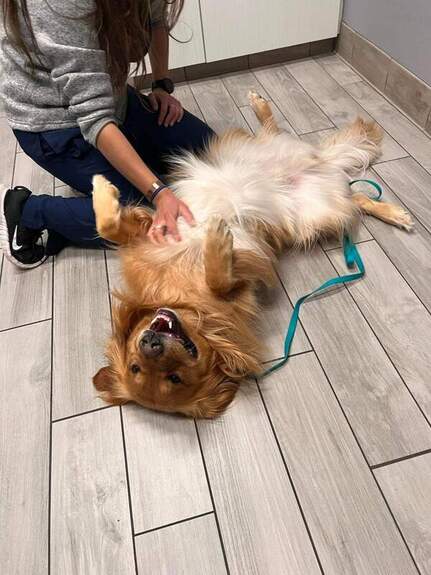


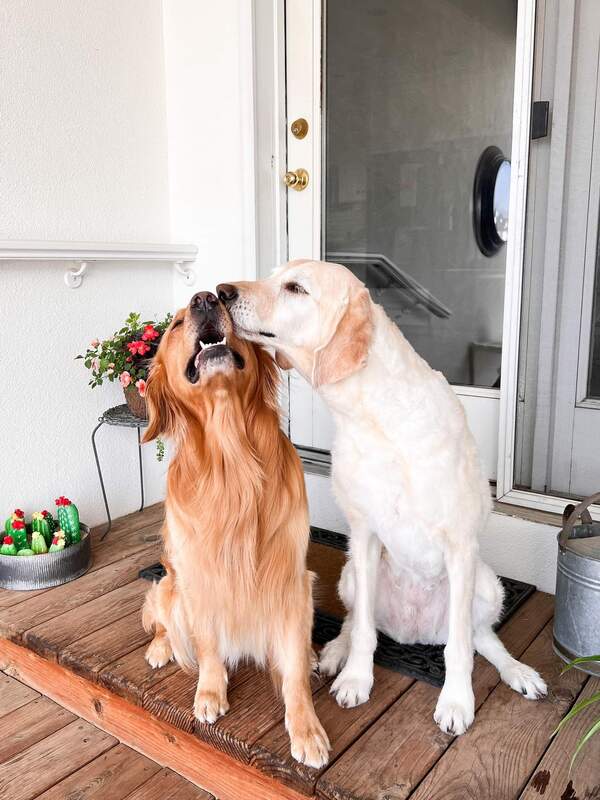
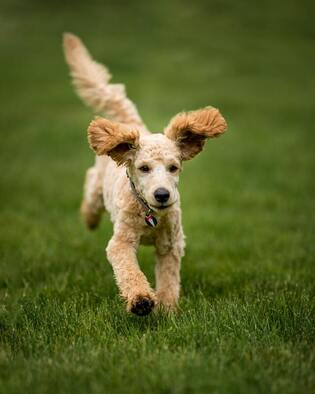



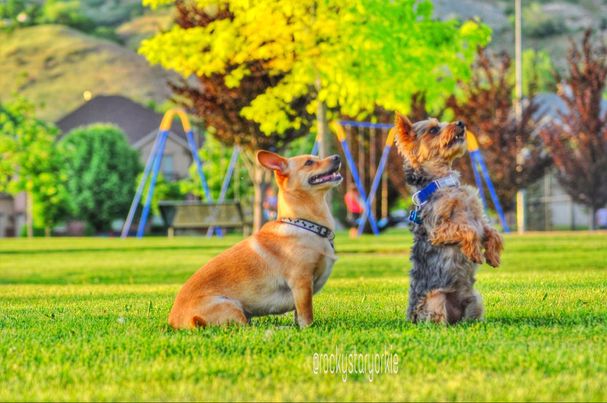


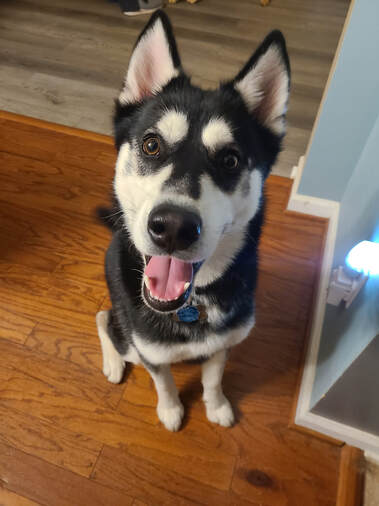
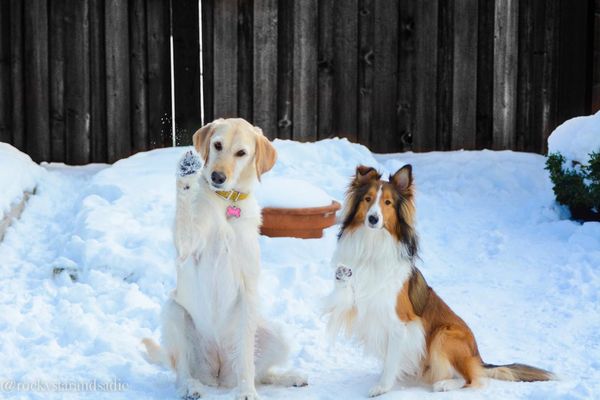
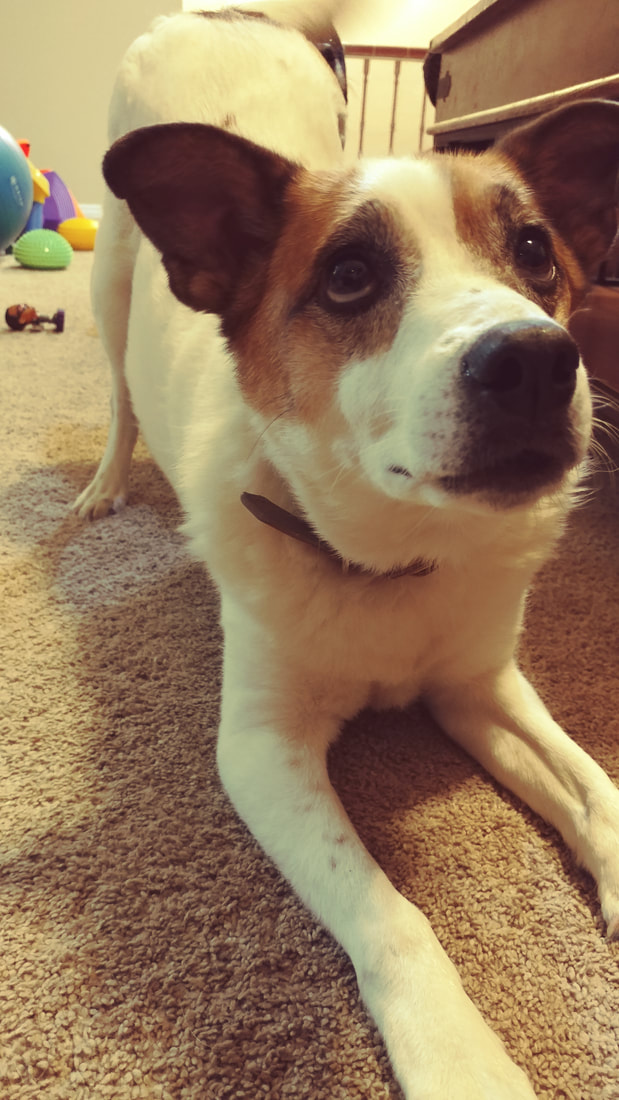
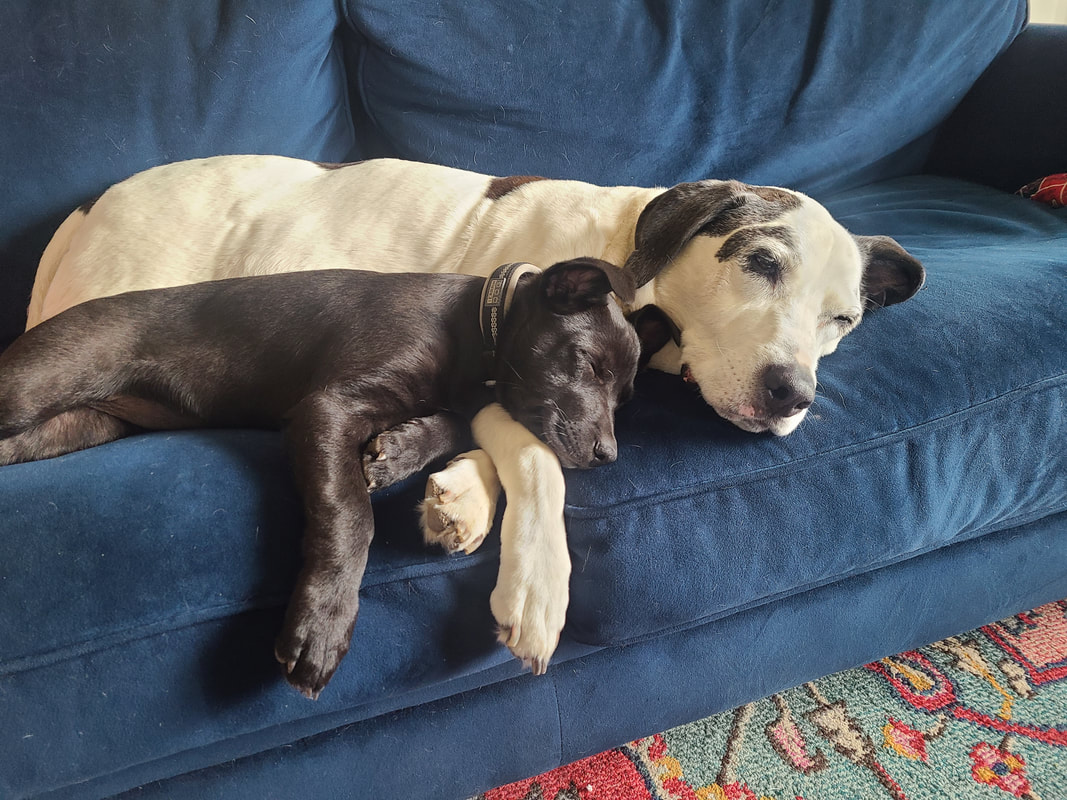
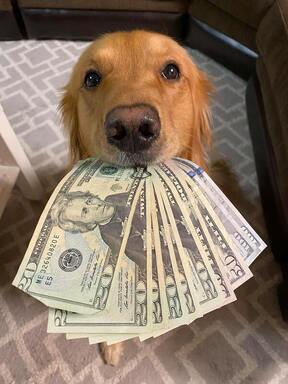
 RSS Feed
RSS Feed